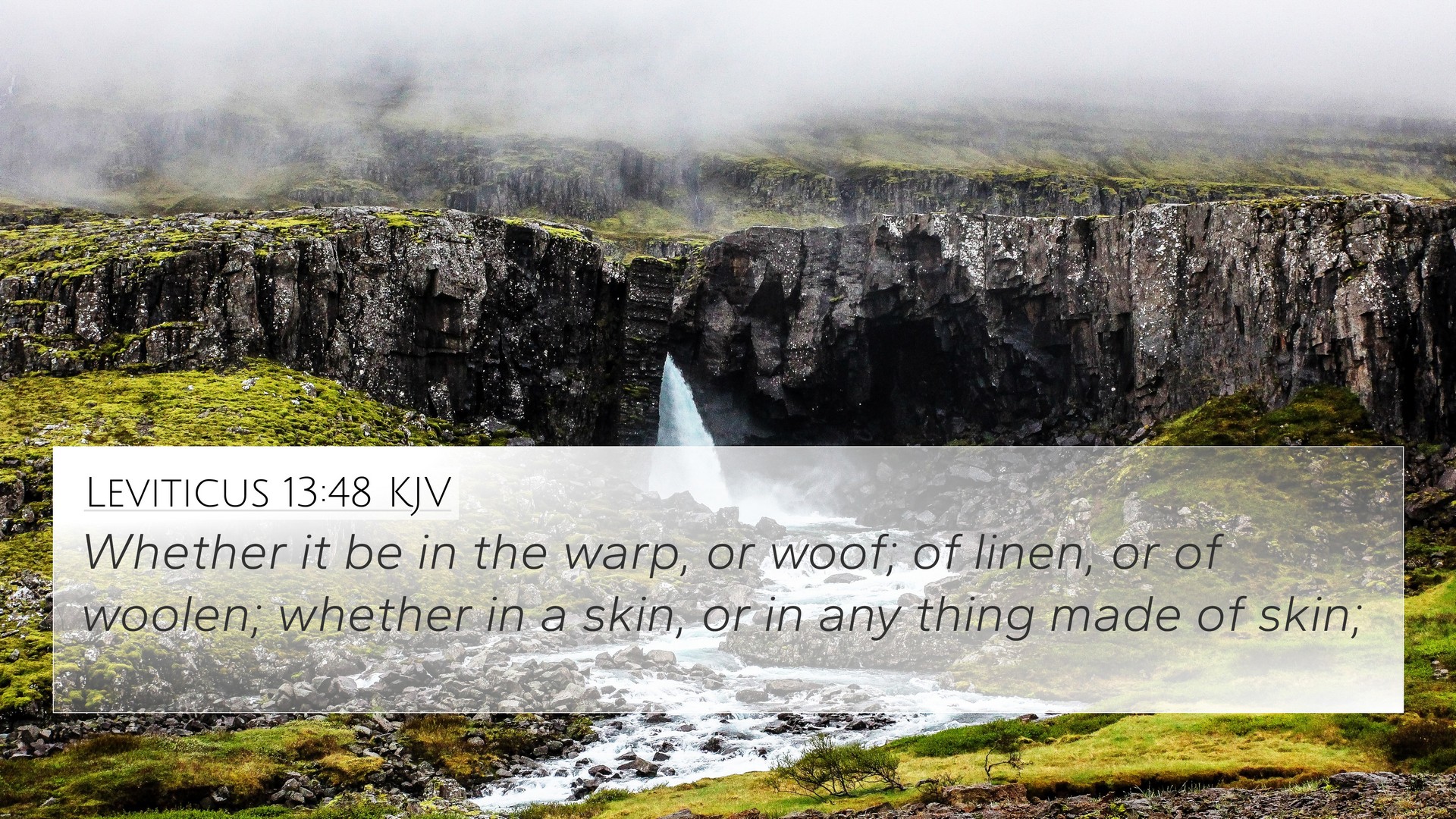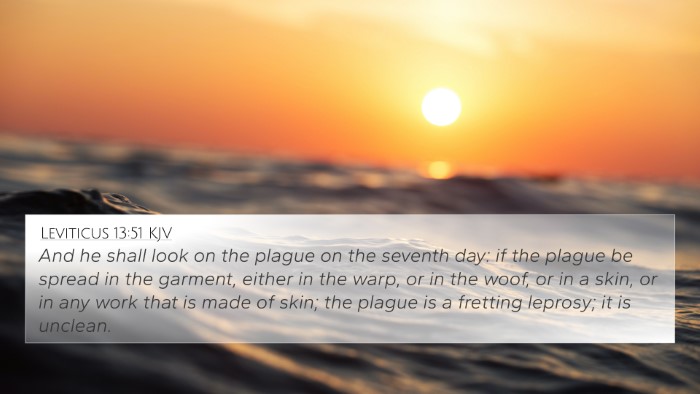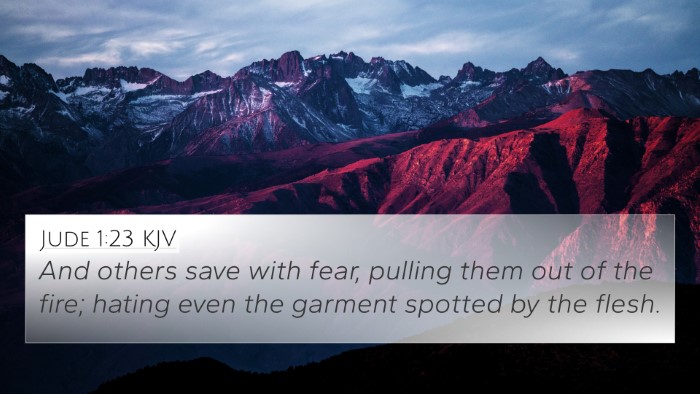Meaning and Interpretation of Leviticus 13:48
Leviticus 13:48 states: "And if the garment also be stained, whether it be woollen or linen, whether it be in the warp or woof, of linen or of woollen; or in skin, or in any thing made of skin." This verse is part of a larger discussion concerning laws about leprosy and infectious skin diseases, detailing the process for identifying and handling contaminated garments.
Summary of Key Insights
- Holiness and Purity: The passage emphasizes God's concern for purity, both in individuals and in their possessions.
- Symbolism of Impurity: Stains and signs of leprosy serve as metaphors for sin. Just as garments can become contaminated, so too can the heart and soul.
- Community Responsibility: The regulation of such matters underscores the importance of communal health and the responsibility of the community to address issues of impurity.
- Prescriptive Laws: These laws illustrate God's order for living a life that is pleasing to Him, reflecting His holiness in every aspect, including clothing.
Commentary Insights
Drawing from the insights of Matthew Henry, Albert Barnes, and Adam Clarke:
Matthew Henry's Commentary
Henry focuses on the necessity of separation from impurity. He interprets the instructions in Leviticus as indicative of the spiritual vigilance required to maintain holiness in both personal life and communal interactions. He also notes that the physical blemishes represent deeper spiritual issues that signal a need for cleansing and restoration.
Albert Barnes' Analysis
Barnes expands on the implications of these laws for understanding God's standards. He highlights that the attention to detail in the regulations surrounding garments signals a broader principle: that every part of life is under divine scrutiny and should reflect the glory of God.
Adam Clarke’s Perspective
Clarke offers practical applications, suggesting that this passage’s emphasis is not just on physical garments but also on spiritual attire. He suggests that believers should consider what they "wear" spiritually, ensuring that their outer actions align with an inner commitment to holiness.
Cross-References for Leviticus 13:48
To enhance our understanding of Leviticus 13:48, we can reference other related scriptures that explore themes of purity, sin, and community regulations:
- Exodus 30:20-21: Discusses the importance of cleanliness in approaching God.
- Leviticus 11:44-45: A call to holiness tied to God’s nature.
- Matthew 23:25-26: Jesus reiterates the importance of inner purity over external appearances.
- 2 Corinthians 7:1: Encouragement to cleanse ourselves from every impurity, both in body and spirit.
- Hebrews 12:14: An admonition to pursue peace and holiness, as without it no one will see the Lord.
- 1 Peter 1:16: Quoting Leviticus, calling believers to be holy as God is holy.
- James 4:8: A directive to cleanse hands and purify hearts in the pursuit of closeness with God.
Conclusion
Leviticus 13:48 serves not only as a directive for the Israelites regarding physical garments but also as a deeper call to spiritual reflection. The themes explored in this passage encourage contemporary readers to engage in self-examination and to consider how their lives reflect God's standards of holiness. Understanding such verses through comparative Bible verse analysis, inter-Biblical dialogue, and thematic connections provides richer insights into the nature of God and His expectations for His people.






